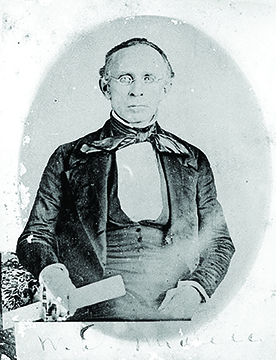Mickey Starling
reporter3@greenepublishing.com
In the 1830s, the population in the territory of Florida was rapidly expanding. Madison County mirrored this population boom by increasing from 522 residents in 1830, to 1,442 in 1840. An additional 1,202 slaves resided in Madison by that time, as well. With the population increase, talk of statehood started to become more serious.
Population wasn't the real concern for wanting statehood. Congress had started pushing to prohibit slavery in the territories, which would have created problems for plantation owners in middle Florida where slavery was viewed as a necessity. The eastern and western sections of Florida were less prosperous in these days and they opposed the idea of statehood because that would require them to pay taxes. Territories were not taxed.
Members of Congress got an earful from a letter sent from residents of East Florida, which stated, "Nature never intended that East Florida should be formed into a state with Middle and West Florida. Its geographical position presents an unsuperable objection. It is only necessary to cast the eye over the map, to see that at no distant day a separation must from necessity take place ..." At the same time, the folks in West Florida were giving serious consideration to joining their territory to the state of Alabama.
Despite the best efforts of East and West Florida, Middle Florida counties controlled the politics of the day. An election was held in 1837 that gave the green light for pursuing statehood, and a constitution was adopted in 1839. Finally, in 1845, Florida was admitted to the Union as a slave state. The state's first governor, William D. Moseley, was nominated at a convention held at the Madison County Courthouse.
Historical information for this article was derived from Elizabeth Sim's book, "The History of Madison County, Florida."

